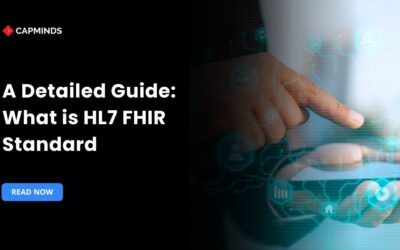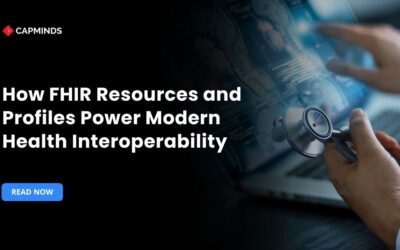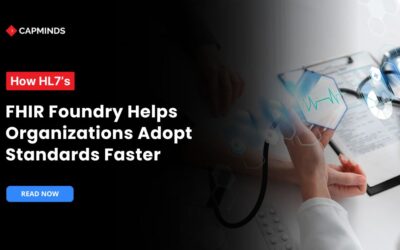Building a Secure API Pipeline for Real-Time Lab Result Exchange
In today’s fast-paced healthcare environment, timely access to lab results can be a matter of life and death. Delays in reporting critical values, from rapid troponin levels in emergency chest pain to COVID-19 tests during a pandemic, can postpone diagnoses and treatments.
One recent analysis found that poor data sharing leads to an estimated $30 billion per year in avoidable costs across U.S. care systems. Equally concerning, studies show that when lab results are slow to arrive, emergency department length-of-stay can increase dramatically.
Patients and providers alike now expect instant, digital access to lab data as soon as tests are completed, driven by regulatory mandates and patient empowerment initiatives. To meet this need, hospitals and labs must move beyond legacy interfaces and implement a modern, secure API pipeline that delivers real-time data about the results into EHRs, portals, and clinical apps.
Related: What is HL7 FHIR Standard – A Detailed Guide
Challenges in Healthcare Data Exchange
Building such a pipeline is not without hurdles. Interoperability and security rank among the top challenges in healthcare data exchange.
On the interoperability side, healthcare IT systems have traditionally been fragmented. Many hospitals still rely on HL7 v2 messaging via point-to-point interfaces (or even fax) to send lab results. HL7 v2 messages are flexible but proprietary and often require custom mappings for each lab–EHR pair.
- As one industry CTO noted, “HL7v2 allows for so much flexibility and variability that … there is still a tremendous amount of data normalization and mapping that must happen on both ends.”
- HL7 FHIR was created to solve many of these challenges with modern web APIs, but adoption can be slow if organizations remain tied to legacy systems.
- In practice, each laboratory and provider may use different codes, formats, or workflows, so aligning them for seamless exchange takes effort.
At the same time, security and privacy are paramount. Medical data is an extremely valuable target: stolen health credentials can fetch 10–20× the value of credit card data on black markets. Any API or integration point that handles Protected Health Information (PHI) must be bulletproof against breaches.
Related: How HL7 FHIR is Embracing Advanced PHI De-Identification Solutions
Legacy lab systems were often designed when APIs and encryption were uncommon in healthcare, so bringing them up to modern security standards is a non-trivial task.
In addition, HIPAA and HITECH regulations require strict safeguards (encryption, audit trails, role-based access) and impose steep penalties for violations (up to $250,000 per incident). Healthcare organizations must balance the urgency of sharing data with the obligation to secure it end-to-end.
Attackers often scan healthcare networks for unprotected APIs to exploit, so without robust security layers, a real-time pipeline could become a backdoor for breaches.
Core Components of a Secure API Pipeline
A mature API pipeline for lab results must embed security at every layer while enabling interoperability. Key components include:
1. API Gateway / Management
An enterprise API gateway acts as the front door for all lab data traffic. It accepts incoming requests, enforces TLS encryption and certificate checks, applies rate limits and quotas, and routes valid requests to backend services. The gateway can also handle authentication and authorization, collect usage analytics, and log all transactions for auditing.
As one expert explains, “an API gateway…receives API requests, enforces throttling and security policies… [and] supports authentication, authorization, security, audit and regulatory compliance”. This centralized layer ensures that only legitimate clients can call the lab API and that abnormal traffic can be spotted and blocked.
2. Authentication and Authorization
Every request for lab data must prove the requester’s identity and privileges. Industry-standard OAuth 2.0 is the de facto method. OAuth2 tokens act as digital passports: they grant apps specific permissions without exposing passwords.
- In practice, providers register each consuming system (EHR, app, or portal) with the identity provider.
- Access tokens are then issued and verified at the API gateway.
- Robust role-based access control ensures that, for example, a lab tech can only send new results, while a physician app can only view results for patients under their care.
- As one security guide notes, “OAuth 2.0 paired with OpenID Connect creates robust protection…OAuth 2.0 handles permissions without exposing passwords, while OpenID Connect verifies identities”.
- Multi-factor auth and even mutual TLS (mTLS) can be added for highly sensitive connections, mirroring best practices in finance or government sectors.
3. Encryption In Transit and At Rest
Data must be encrypted whenever it moves over networks or sits on disk. In practice, HTTPS with TLS 1.2 or higher is non-negotiable for all API calls. This ensures lab results streaming from the LIS to the EHR can’t be eavesdropped. On the server side, sensitive data (result values, patient identifiers) should be stored in encrypted databases (e.g., AES-256 at rest).
Some organizations even encrypt data at a more granular level in the API payload. The result is a “zero trust” posture: even if a network or server were compromised, the PHI remains unreadable without the keys.
4. Audit Logging and Monitoring
Every access to lab results must leave an audit trail. The pipeline should log who accessed which patient’s lab data and when, capturing details of the request and response (without logging raw PHI). These logs feed into Security Information and Event Management systems to trigger alerts on anomalous behavior.
As one expert emphasizes, “every single access to patient data through healthcare APIs must be meticulously logged. These digital breadcrumbs create accountability and allow security teams to spot suspicious patterns”. Regular audits and automated anomaly detection help detect breaches early.
Logging also supports compliance: HIPAA audits require evidence of access controls and usage of PHI. A secure pipeline builds this auditability by design.
5. Data Validation and Standardization
The pipeline must ensure that incoming and outgoing data conform to expected formats. This often means parsing legacy HL7 lab messages from the lab information system (LIS) and transforming them into HL7 FHIR DiagnosticReport or Observation resources.
Validating codes (LOINC for tests, SNOMED for results) prevents data errors. Modern FHIR servers include schema validation against official profiles or Implementation Guides.
By enforcing standards at the API layer, you avoid “garbage in, garbage out” and reduce normalization overhead downstream. For example, a centralized transform service can take an HL7v2 ORU (Observation Result) message from a lab analyzer and emit a FHIR DiagnosticReport with the same content, bridging old and new worlds.
Each of these components, gateway, auth, encryption, logging, and validation, forms part of a defense-in-depth architecture. Together, they establish a secure, audited pipeline so that when labs and providers exchange data, patient privacy and data integrity are fully protected.
Key Standards and Technologies
A secure lab results pipeline relies on healthcare-specific standards and modern web technologies:
- HL7 FHIR: FHIR is the latest standard for clinical data exchange. It uses RESTful APIs with JSON/XML to represent data.
- HL7 v2: This still-popular standard powers many lab interfaces today. HL7 v2 feeds can be ingested by the pipeline. In many implementations, a hospital’s integration engine receives the HL7 v2 message, converts it to FHIR, and then calls the API.
- OAuth 2.0 / OpenID Connect: As noted, this framework is now standard for healthcare APIs. It supports scopes, tokens, and identity federation.
- Transport Layer Security: HTTPS is mandatory for any production healthcare API. This is both an industry best practice and a legal expectation under HIPAA for data in transit.
- Audit and Compliance Standards: HIPAA and HITECH define the security rules for PHI. The pipeline must satisfy the “technical safeguards” and “administrative safeguards”.
- SMART on FHIR: This standard enables secure, context-aware applications. A SMART app launched from an EHR can use OAuth2 to obtain a token and then query FHIR APIs on behalf of the patient.
By aligning with these standards and technologies, a lab–provider pipeline becomes compatible with the broader healthcare ecosystem. FHIR and OAuth2 ensure that any FHIR-capable EHR or app can plug in.
TLS and HIPAA alignment ensure data stays secure and compliant throughout.
Real-World Use Cases of Real-Time Lab Exchange
Clinician accessing patient data, including lab results, via a telehealth platform. In practice, secure real-time lab APIs unlock many high-impact scenarios:
1. Emergency and Acute Care
In an emergency department, minutes matter. A patient with chest pain or stroke symptoms may require stat labs (troponin, D-dimer) before intervention.
A secure API pipeline can automatically push results from the lab information system to the ED’s EHR as soon as they are available, without clerical delay.
- Studies have confirmed that when lab turnaround is slow, patients tend to stay longer in the ED.
- Conversely, faster lab delivery can shorten ED length-of-stay and speed critical decisions.
- Some health systems have built clinical decision support that fires alerts as soon as critical lab values arrive, triggering immediate care changes.
2. Inpatient and ICU Care
In a hospital ward or ICU, frequent lab tests monitor trends. A modern pipeline ensures that lab draw results feed instantly into clinical dashboards and mobile devices.
For example, after a morning blood draw, results appear in the patient’s electronic chart and mobile app, allowing the care team to adjust fluids or medications in near real time. Real-time exchange also prevents duplicated testing: if a patient is transferred between units, each team sees prior labs without delay, reducing redundant orders.
3. Outpatient and Ambulatory Care
Primary care physicians and specialists increasingly use lab tests to manage chronic diseases. With a secure API pipeline, when a patient gets a lab draw at a reference lab or satellite clinic, results can be delivered electronically to the provider’s EHR without faxing.
This means a patient’s lab is available during the next clinic visit, improving continuity of care. For telemedicine visits, clinicians can even pull in same-day lab results right into the virtual visit. For example, a patient could have labs drawn locally, and the values would appear in the telehealth app minutes later, supporting remote diagnosis and treatment.
4. Patient Portals and Apps
Real-time lab exchange empowers patients, too. Federal rules require that patients have access to their lab results through apps or portals. When lab data flows via APIs, it can populate patient-facing portals instantly. A patient can log into their app and see today’s test results, interpret them with educational resources, or share them with caregivers.
This transparency boosts patient engagement and avoids the anxiety of waiting. FHIR even allows apps to merge lab results from different providers into one view, giving the patient a unified health record.
5. Telemedicine and Remote Monitoring
For home-based care, labs may be collected at home or at local clinics. FHIR APIs enable secure transmission of this data back to a central record. For instance, a home health patient’s blood culture results can be fetched by the doctor’s EHR from the lab’s FHIR server via the pipeline.
The same holds for wearable/point-of-care devices that produce lab-like data. As one analyst notes, FHIR can “enable the secure transfer of patient data from home-based medical devices to healthcare providers” for effective monitoring. This keeps virtual care continuous and responsive.
6. Public Health Reporting and Research
Although outside the hospital setting, real-time lab data can feed public health dashboards and research registries. For example, during the COVID-19 pandemic, many regions built interfaces where lab-confirmed test results flowed in near real-time for surveillance.
A secure API pipeline ensures that only aggregate or authorized data is shared, maintaining patient privacy while accelerating public health response. Similarly, researchers running clinical trials can use FHIR to obtain lab results quickly to monitor trial participants or perform observational studies.
In all these cases, the key is integration: labs and care teams no longer “operate in silos.” Instead, every test result – whether it comes from the hospital lab, an outpatient facility, or a patient’s home – enters the provider’s workflow automatically.
As one integration specialist put it, converting lab data into FHIR makes it “easy to integrate results from multiple sources into a single patient record,” so providers have “instant access” to standardized lab values and can make “faster, more informed decisions”.
CapMinds HL7 FHIR Service for Healthcare Practice
CapMinds offers the best all-in-one health interoperability solution for healthcare practices. Our HL7 FHIR service will understand your clinical needs and requirements to cater to our solution.
We have years of experience in this field, faced many challenges, and tackled them with ease.
Why can CapMinds be your Go-to Interoperability Solution?
- We are experienced professionals with years of experience in the field.
- Our technical team is an expert that will analyze your healthcare practice thoroughly to tailor the Interoperability solution.
- We prioritize safety, security, encryption, and authentication to protect your healthcare practice’s patients’ data.
- Our comprehensive solution ensures seamless interoperability, adhering to industry standards and using standard protocols.
- We offer comprehensive training sessions to healthcare staff.
- Our affordable health interoperability solution benefits healthcare practices at all levels.
If you are searching for the best interoperability service for your practice, CapMinds is your choice. We can assist you by navigating all potential challenges and ensuring seamless health data exchange.
Reach out to CapMinds Health Data Exchange Solutions for your Healthcare Practice.




